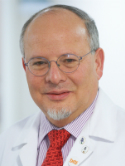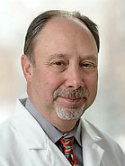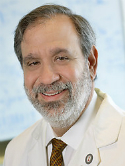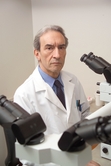Involved-field radiotherapy before high-dose therapy and autologous stem-cell rescue in diffuse large-cell lymphoma: Long-term disease control and toxicity Journal Article
| Authors: | Hoppe, B. S.; Moskowitz, C. H.; Filippa, D. A.; Moskowitz, C. S.; Kewalramani, T.; Zelenetz, A. D.; Yahalom, J. |
| Article Title: | Involved-field radiotherapy before high-dose therapy and autologous stem-cell rescue in diffuse large-cell lymphoma: Long-term disease control and toxicity |
| Abstract: | Purpose: To analyze outcome, prognostic factors, and toxicities in patients with diffuse large-cell lymphoma (DLCL) who received involved-field radiotherapy (IFRT) before high-dose chemotherapy with autologous stem-cell rescue (ASCR). Patients and Methods: Between January 1990 and August 2006, 164 patients with relapsed or refractory DLCL received IFRT at Memorial Sloan-Kettering Cancer Center (New York, NY) before high-dose chemotherapy and ASCR. IFRT was delivered to involved sites measuring more than 5 cm or to sites with residual disease more than 2 cm. Radiotherapy was administered in 1.5-Gy fractions twice daily to a total dose of 30 Gy. Progression-free survival and overall survival were calculated, and short- and long-term toxicity was assessed according to National Cancer Institute Common Toxicity Criteria (version 2.0). Median follow-up was 60 months (range, 2 to 187 months). Results: Two- and 5-year progression-free survival was 62% and 53%; 2- and 5-year overall survival was 67% and 58%, respectively. Sixty-seven patients relapsed; only 10 patients relapsed completely within the radiotherapy field. There were seven early treatment-related mortalities and 11 secondary cancers (including four myelodysplastic syndromes), one of which occurred within the IFRT site and five after total-body irradiation. Conclusion: Minimal treatment-related mortality and morbidity resulted from short, intensive, involved-field radiotherapy before high-dose chemotherapy and ASCR, which was incorporated into a salvage regimen for patients with relapsed/refractory DLCL. This chemoradiotherapy salvage regimen resulted in a low local relapse rate that could potentially translate into an improved total outcome. © 2008 by American Society of Clinical Oncology. |
| Keywords: | adolescent; adult; cancer chemotherapy; controlled study; treatment outcome; aged; disease-free survival; middle aged; survival rate; major clinical study; clinical trial; mortality; salvage therapy; cancer growth; cancer radiotherapy; disease free survival; radiation dose; drug megadose; follow up; follow-up studies; antineoplastic agent; skin neoplasms; lung disease; antineoplastic combined chemotherapy protocols; radiotherapy dosage; radiotherapy; autologous stem cell transplantation; hematopoietic stem cell transplantation; radiation injury; cancer mortality; skin tumor; radiation injuries; multivariate analysis; large cell lymphoma; lymphoma, large b-cell, diffuse; neoplasms, second primary; second cancer; cancer control; ileus; transplantation, autologous; lung diseases; autotransplantation |
| Journal Title: | Journal of Clinical Oncology |
| Volume: | 26 |
| Issue: | 11 |
| ISSN: | 0732-183X |
| Publisher: | American Society of Clinical Oncology |
| Date Published: | 2008-04-10 |
| Start Page: | 1858 |
| End Page: | 1864 |
| Language: | English |
| DOI: | 10.1200/jco.2007.15.4773 |
| PUBMED: | 18332466 |
| PROVIDER: | scopus |
| DOI/URL: | |
| Notes: | --- - "Cited By (since 1996): 4" - "Export Date: 17 November 2011" - "CODEN: JCOND" - "Source: Scopus" |
Altmetric
Citation Impact
BMJ Impact Analytics
MSK Authors
Related MSK Work








